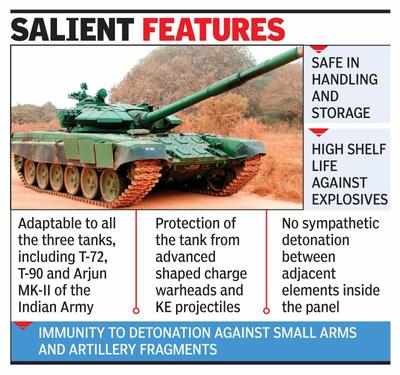aditya g
New Member
- Joined
- Jan 14, 2014
- Messages
- 1,962
- Likes
- 4,651
Viz armoured vehicles for Police and CAPFs, situation is FUBAR despite India being an automotive powerhouse.
Army/RR is much better with following available:
1. Caspir (aka Casper) MPV
2. OFB's Aditya MPV
3. Laggar Steel Takshak
4. Mahindra Rakshak
5. Semi armoured Gypsies
http://www.thehindu.com/news/nation...-safeguard-their-vehicles/article16979942.ece

Security forces in Kashmir are resorting to jugaad (situational improvisation) to protect their vehicles from stone-throwers.
In a bid to add catapult effect to windows and doors, the well-netted Rakshak Gypsy, an armoured patrol car developed by the Defence Research and Development Organisation (DRDO) mainly for internal security, has been cushioned with plastic bottles beneath the net.
“The iron-mesh mounted on the doors and windows has been cushioned with empty plastic bottles to avoid damage to the window glasses when stone throwers come close to a vehicle. The cushioning also repulses the stones,” said a senior police officer posted in south Kashmir.

His car was recently cornered by stone-throwing protesters and had its glasses damaged.
The bodies of many vehicles have been padded up with the traditional bamboo-cane shields. “Sometimes it rains stones. Bamboo shields reduce the noise emanating from the stones hitting the vehicle, which confuses drivers,” said the officer.
Even head and back lights have been padded up, the officer said, as stone throwers would “aim at these lights during the evening and late-night crackdowns.”
Hundreds of buses and large vehicles, meant for ferrying jawans to volatile districts, have been fixed with tin sheets or bamboo shields on the side windows to avoid casualties due to stone-throwing.
For effective policing, many vehicles have cameras mounted on top to locate position of protesters in advance while moving in a volatile area.
“The doors of many vehicles are locked with long iron-bars inside than bolts, which would unlock due to protesters banging,” said the police officer.
According to police data, 403 vehicles were damaged in the five-month-long street protests since July 8 last year.
Army/RR is much better with following available:
1. Caspir (aka Casper) MPV
2. OFB's Aditya MPV
3. Laggar Steel Takshak
4. Mahindra Rakshak
5. Semi armoured Gypsies
http://www.thehindu.com/news/nation...-safeguard-their-vehicles/article16979942.ece
Security forces in Kashmir are resorting to jugaad (situational improvisation) to protect their vehicles from stone-throwers.
In a bid to add catapult effect to windows and doors, the well-netted Rakshak Gypsy, an armoured patrol car developed by the Defence Research and Development Organisation (DRDO) mainly for internal security, has been cushioned with plastic bottles beneath the net.
“The iron-mesh mounted on the doors and windows has been cushioned with empty plastic bottles to avoid damage to the window glasses when stone throwers come close to a vehicle. The cushioning also repulses the stones,” said a senior police officer posted in south Kashmir.
His car was recently cornered by stone-throwing protesters and had its glasses damaged.
The bodies of many vehicles have been padded up with the traditional bamboo-cane shields. “Sometimes it rains stones. Bamboo shields reduce the noise emanating from the stones hitting the vehicle, which confuses drivers,” said the officer.
Even head and back lights have been padded up, the officer said, as stone throwers would “aim at these lights during the evening and late-night crackdowns.”
Hundreds of buses and large vehicles, meant for ferrying jawans to volatile districts, have been fixed with tin sheets or bamboo shields on the side windows to avoid casualties due to stone-throwing.
For effective policing, many vehicles have cameras mounted on top to locate position of protesters in advance while moving in a volatile area.
“The doors of many vehicles are locked with long iron-bars inside than bolts, which would unlock due to protesters banging,” said the police officer.
According to police data, 403 vehicles were damaged in the five-month-long street protests since July 8 last year.
Blast from the past, We had better fighting vehicles than today ( Mahindra Rakshak ), Heavy vehicle factory Armored patrol car based on Nissan 1 ton in Army at J&K ..
==========================
==========================
Some of them are still preserved ..
Go through the link : http://www.drdo.gov.in/drdo/labs/CVRDE/English/index.jsp?pg=Products.jsp



























